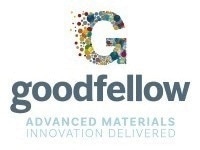May 5 2003
Background
Gold has been known since prehistoric times.
It is a soft metal with a characteristic yellow colour. Gold is the most malleable and ductile of any element. It is unaffected by air, water, alkalis and acids, with the exception of “aqua regia”, HNO3/HCl. The fact that it is chemically unreactive means that it is often found in its natural state.
Gold is a good thermal and electrical conductor and has excellent reflective properties to both light and infrared. It has an abundance in the earth’s crust of 0.0011 ppm.
Most of the metal is retained for use as bullion reserves, but some is used within the electronics and jewellery industries, where it is frequently alloyed with other elements to improve the mechanical properties of the metal (e.g. copper and silver).
Other uses for Gold are as a heat reflecting coating for glass as well as as a decorative medium.
Key Properties
The key properties of Gold are tabulated below.
Table 1. Key properties
| Atomic Properties |
| Atomic number |
79 |
| Atomic radius - Goldschmidt ( nm ) |
0.144 |
| Atomic weight ( amu ) |
196.9665 |
| Crystal structure |
Face centred cubic |
| Electronic structure |
Xe 4f14 5d10 6s1 |
| Photo-electric work function ( eV ) |
4.8 |
| Thermal neutron absorption cross-section ( Barns ) |
98.8 |
| Valences shown |
1,3 |
| Ionisation Potential |
No. |
eV |
| |
1 |
9.22 |
| |
2 |
20.5 |
| Natural Isotope Distribution |
Mass No. |
% |
| |
197 |
100 |
| Electrical Properties |
| Temperature coefficient ( K-1 ) |
0.0040 @ 0-100 |
| Electrical resistivity ( µOhm.cm ) |
2.20 @ 20 |
| Thermal emf against Pt (cold 0 °C - hot 100 °C) ( mV ) |
+0.74 |
| Mechanical Properties |
| Material condition |
Soft |
Hard |
Polycrystalline |
| Bulk modulus ( GPa ) |
|
|
171 |
| Hardness - Vickers |
20-30 |
60 |
|
| Poisson's ratio |
|
|
0.42 |
| Tensile modulus ( GPa ) |
|
|
78.5 |
| Tensile strength ( MPa ) |
130 |
220 |
|
| Yield strength ( MPa ) |
|
205 |
|
| Physical Properties |
| Boiling point (°C ) |
3080 |
| Density ( g.cm-3 ) |
19.30 @ 20 |
| Melting point (°C ) |
1064.4 |
| Thermal Properties |
| Coefficient of thermal expansion ( x10-6 K-1 ) |
14.1 @ 0-100 |
| Latent heat of evaporation ( J.g-1 ) |
1738 |
| Latent heat of fusion ( J.g-1 ) |
64.9 |
| Specific heat ( J.K-1.kg-1 ) |
129 @ 25 |
| Thermal conductivity ( W.m-1.K-1 ) |
318 @ 0-100 |
About Goodfellow

Goodfellow supplies metals, ceramics and other materials to meet the research, development and specialist production requirements of science and industry worldwide.
The Goodfellow group consists of four companies. The main administration, research laboratories and workshops are located at the Company's headquarters in Cambridge, England. The subsidiary offices in America, France and Germany provide an additional service.